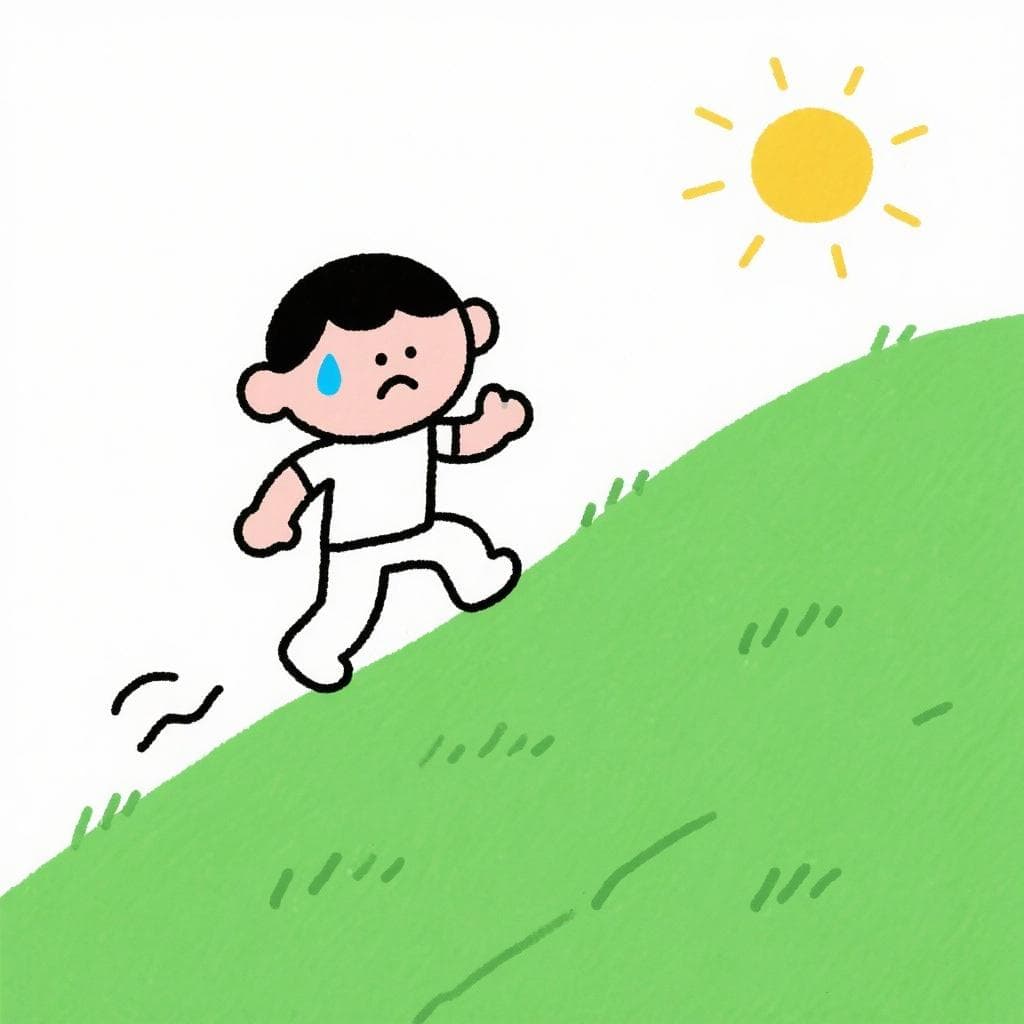Cuesta subir la cuesta.
CWES-ta su-BIR la CWES-ta
It's hard to climb the hill.
🔊 Listen & Practice
Start with slow speed to master pronunciation, then gradually increase to challenge yourself.
🎨 Visualization

Cuesta subir la cuesta. It's tough climbing that hill!
🎯 Pronunciation Focus
The 's' + Consonant Blend ('st')
/st/The main challenge is starting the 's' sound cleanly without adding an 'e' before it, a common habit for English speakers. Your tongue should hiss right behind your teeth, then move directly into the 't' sound.
The Soft 'b' Sound
/β/In 'subir', the 'b' is very soft. Your lips should come close together but not stop the air completely. It's a continuous, gentle sound, almost like a 'v' made with both lips.
📝 Practice Breakdown
Start here. Focus on a clean 's' sound. Make sure you don't say 'ecuesta'. It should flow directly from the vowel: 'cue-s-ta'.
Now, add the second part. Practice the soft 'b' in 'subir'—let your lips almost touch but keep the air flowing. Then, link it all together smoothly.
Key Words in This Tongue Twister:
📚 Background
This is a classic, short Spanish 'trabalenguas' that plays on the double meaning of the word 'cuesta'. The first 'cuesta' comes from the verb 'costar' (to cost effort), and the second is a noun meaning 'hill' or 'slope'. So, it cleverly means, 'It's hard to climb the hill.' It's a perfect exercise for beginners.
❌ Common Pitfalls
Adding an 'e' Sound
Mistake: "Pronouncing 'cuesta' as 'ecuesta', adding an extra vowel sound before the 's', which is a common reflex for English speakers."
Correction: Start the word directly with the 'k' sound of the 'c'. The 's' sound should flow right after the vowel without any 'e' in front. Try holding the 's' sound like a snake ('ssss') and then add '-ta' to feel the difference: 'cuessss-ta'.
Using a Hard English 'b'
Mistake: "Pronouncing the 'b' in 'subir' with a hard, explosive puff of air, like in the English word 'boy'."
Correction: The Spanish 'b' between vowels is much softer. Let your lips gently touch without pressing them together tightly. The sound should be continuous and flow smoothly, not stop abruptly.
🌎 Where It's Used
General Spanish
This is a universally known phrase and tongue twister across the entire Spanish-speaking world due to its simplicity and clever wordplay.
🔗 Related Tongue Twisters
The Hill Climb Challenge
This one is about clarity, not just speed. Can you say it five times in a row perfectly, making sure the 's' in 'cuesta' is clean and crisp every single time?
🏷️ Tags
Frequently Asked Questions
What does 'cuesta' mean? I see it twice.
Great question! This is a fun play on words. The first 'cuesta' comes from the verb 'costar' and means 'it costs effort' or 'it's hard'. The second 'cuesta' is a noun that means 'hill' or 'slope'. So the phrase cleverly means, 'It's hard to climb the hill.'
Why is getting the 's' sound right in 'cuesta' so important?
In Spanish, words don't start with an 's' followed by a consonant (like 'special' or 'stop'). English speakers often add a small 'e' sound before it ('es-pecial'). Mastering a clean 's' sound without that extra vowel, like in 'cuesta' or 'está', will make your accent sound much more natural.

